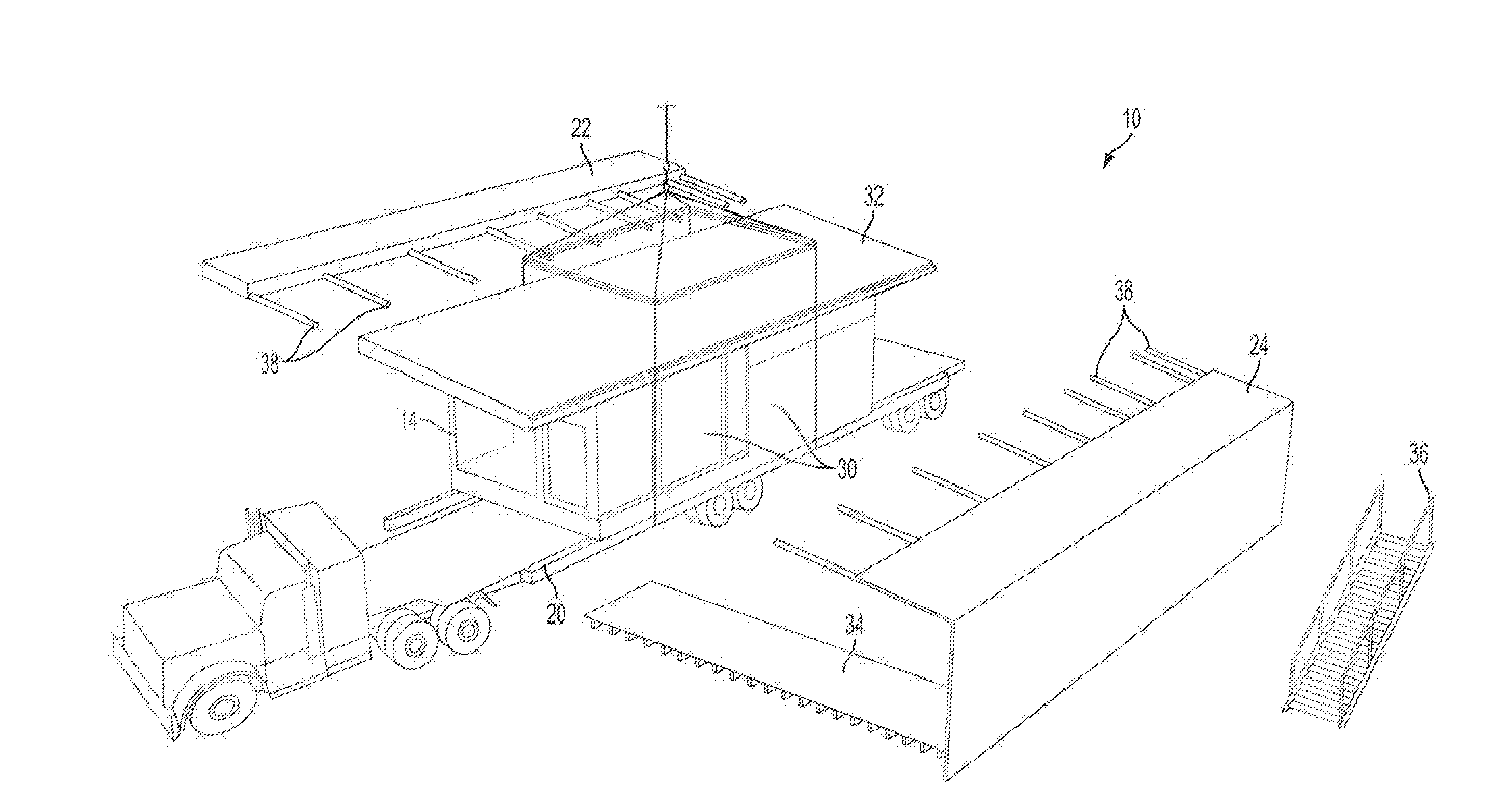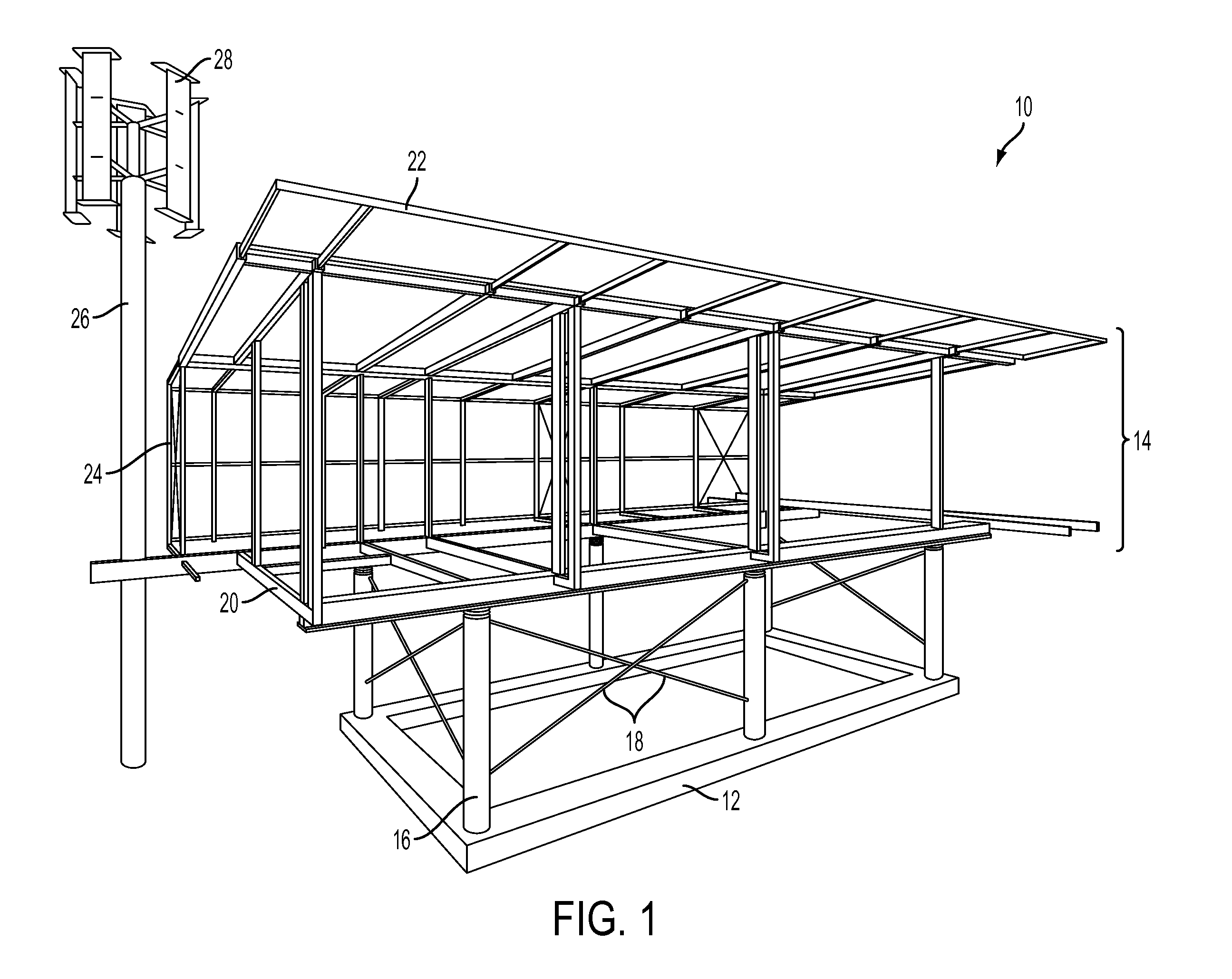Structure
a prefabricated structure technology, applied in the field of structures, can solve the problems of limited or prevented development, substantial difficulties in erecting and maintaining homes in such isolated or less hospitable environments, and lack of access to potable water. achieve the effect of maximizing the orientation of sun/solar panels
- Summary
- Abstract
- Description
- Claims
- Application Information
AI Technical Summary
Benefits of technology
Problems solved by technology
Method used
Image
Examples
examples
Land Without Power
[0076]The Flexible Dwelling may be configured for land without power by including power generation through the roof mounted photovoltaic panels and / or the steel frame mounted wind turbine. The power generated from these systems is stored in a bank of batteries mounted within the dwelling. To reduce electrical loads, heating may be provided by roof mounted solar water panels tied to a thermal energy storage vault beneath the ground. The thermal storage vault would provide seasonal heat storage for periods when heating loads exceed solar energy exposure. Alternatively or supplementally, a propane boiler may be used for heating.
[0077]Land Without Potable Water:
[0078]The Flexible Dwelling may be configured for land without potable water by including a water catchment system. The water catchment system consists of a coated metal roof which channels rain water into a coated metal gutter. The captured water is then filtered through a screen and drained through a downspout...
PUM
 Login to View More
Login to View More Abstract
Description
Claims
Application Information
 Login to View More
Login to View More - R&D
- Intellectual Property
- Life Sciences
- Materials
- Tech Scout
- Unparalleled Data Quality
- Higher Quality Content
- 60% Fewer Hallucinations
Browse by: Latest US Patents, China's latest patents, Technical Efficacy Thesaurus, Application Domain, Technology Topic, Popular Technical Reports.
© 2025 PatSnap. All rights reserved.Legal|Privacy policy|Modern Slavery Act Transparency Statement|Sitemap|About US| Contact US: help@patsnap.com



